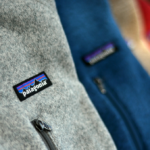Brand building and positioning are key to driving business performance. So, what stops everyone from doing it well? Read on for common pitfalls and solutions to increasing brand power and revenue.
Brew Dog. Hard to argue against them being the brewing and marketing sensation of the past ten years. Since they first started producing beer in a shed in 2007, the two founders have been clear about who they wanted to be, the type of business they wanted to have, who their target market was and how they wanted to be perceived.
They remind me a lot of the CEO of Wychwood Brewery, Ian Rogers, who I worked with for years. At the time I had worked in drinks PR for nearly ten years helping to establish the Belgium beer category, the alcopops market, launching Samuel Adams Boston Beer and helping Budweiser Budvar protect its brand identity and reputation from the might of Anheuser Busch.
Building a brand is the only growth strategy that matters
But Ian and his team were a breath of fresh air. They saw things differently than other brands. They saw things through the eyes of their target customers and they never wavered. Like BrewDog now, their target audience were as much into the emotional attachment of a brand as they were into great beer. Drinking Hobgoblin was a statement, as it is being seen with a can of Punk IPA in your hand. They knew how to position the brand in the minds of their customers.
Differentiate. Be distinctive. Be relevant.
Creating a brand image with clever brand codes not only created an effective brand position for Wychwood but also a strong brand that could grab market share. Beers, packaging and campaigns were developed to make noise. Ads were banned, packaging was criticised, and beers were taken off-shelf.
Sound familiar? It should do. BrewDog employed a similar strategy in the early days. And it’s not too different now. But even Oasis had to eventually calm down. The key point? Their customers loved it. By applying shrewd and clever marketing strategies, Wychwood positioned itself as the rebel of the sector and it delivered against the brand promise in spades.
By looking at the market through the eyes of their customers and not their own, they saw an opportunity to generate meteoric growth and they delivered it. Less than ten years later, Ian realised his dream by selling to Marston’s for £10-£15 million. There is much speculation around a future IPO of BrewDog but, sell or not, here’s a business that was valued at $2 billion at the start of 2020.
There are two ways to position a brand
You can either position your brand about something or against something. “About” is when you say to your target audience, “I stand for this”. The second way is when you say to your customer, “I stand against them”. And occasionally you can do both. They’re not mutually exclusive of each other. An example? Apple is often cited. The three tenets of Apple’s positioning are Simplicity. Creativity. And humanity.
The three things that if the brand had control of three brain cells in the head of every target customer, would say “this is Apple. This is what we stand for. This is what you get when you buy us.” Apple has always stood for the difference. It’s an “about” positioning. Be Different being one of the smartest ways to immediately differentiate itself from all other pcs. In the simplest terms, people who buy macs are different to those who buy PCs.
They then took this idea to proactively position themselves against PCs in the famous ad campaign, “I’m a mac, I’m a pc”. As well as positioning themselves about difference and independence, they were also actively positioning themselves against PCs. Not every brand can do it. But when you can and the creativity is on point, just watch your market share grow.
What is positioning?
In simplest terms, positioning is the intended brand image. It’s what you want your customer to think about when they think about your brand.
How to position your brand?
One of the best exercises to figuring out what your positioning is to consider you have control over three brain cells in your consumers’ minds. Into these three cells you can insert words, phrases, or associations. It should be the ideal mix that would have the best overall impact on your customer in terms of driving their behaviour/ preference / purchase etc.
Let’s go back to BrewDog. Consider their values and beliefs and we can have a good go at distilling them to three core tenets:
- Fiercely independent brewer
- A force for good
- The beer, the whole beer and nothing but the beer
Or consider Apple. According to this great case study from my old marketing professor, Mark Ritson, the brand’s three tenets are:
- Simplicity
- Creativity
- Humanity
The goal for positioning is to work out what your intended brand image is. What you want your customer to think about when it comes to your brand.
How do you figure out what your associations should be?
The journey to enlightenment begins with diagnosis. And here’s the bit that so many brands miss when it comes to building a brand positioning statement. Here’s the bit which businesses fail to invest in when considering brand building and brand positioning strategies. You need to know what your current brand image is.
A branding strategy that doesn’t involve the active participation of your current customers or target consumers will create a brand that ends up being beige. No differentiation. No distinction. No relevance. The brand’s uniqueness washed away with coats of magnolia.
Build from the outside in. Not inside out.
Too often brands believe they know best. Better than their customers. Better than the targets they’re going after. They believe they know what they want them to think about when it comes to their brand without ever asking them. They believe they can be distinctive and different without looking at the world through their customers eyes. In other words, they position the brand based on their own internal world. Not the external world – the real world where their customers live and who rarely, if ever, consider the role of brands in their lives.
Diagnostics is the best investment a business can make to brand building and positioning
There are many parts to a brand diagnosis. From delving back through the brand’s history to understanding what led to the creative spark. Through to analysing competitors and understanding customers. By diagnosing the problem and the opportunity, by going through a robust targeting exercise and through positioning for something or against something, you’re building a brand for success.
Steve Jobs recognised this when building Apple with his agency of choice. Ian Richards recognised this when building Wychwood and the fine folk of BrewDog implicitly recognise this as they continue to build their brand and business for a generation of beer lovers.







